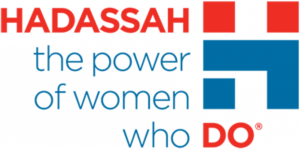Hadassah
President's Column
Generations Have Followed in Henrietta Szold’s Footsteps
Before becoming a catalyst of history, Henrietta Szold was a witness. One of her earliest memories was watching from her father’s shoulders as Abraham Lincoln’s funeral procession passed through Baltimore.
She was 4 years old.
At Hadassah, we are moved deeply by our founder’s immense contributions to Israel’s development. But she was also an icon and trendsetter of American achievement and values: visionary yet pragmatic, traditional but ready to breach boundaries.
The daughter of Rabbi Benjamin and Sophie Szold, she was the first of her family born in the United States. Though a newcomer to America, Rabbi Szold became a prominent pro-Lincoln figure in a city where slavery was legal, and his eldest daughter became his translator, editor and adviser.
After high school, Henrietta Szold taught English, French and algebra at a secular school for girls as well as Bible and history at the religious school of her father’s synagogue. Still in her teens, she became the Baltimore correspondent for the newspaper The Jewish Messenger, giving her national exposure—albeit writing under the pseudonym “Shulamith.”
Szold was always both educator and pupil. She established a night school for immigrants that taught English and civics, but from her Eastern European Jewish students she was exposed to ideas about Zionism and became a founding member of the Baltimore Zionist Association in 1894, three years before Theodor Herzl convened the First Zionist Congress. Years later, she was the first woman to enroll as a student at the Jewish Theological Seminary in New York City—on the condition that she not seek rabbinical ordination. Many of the seminary’s teachers were recent immigrants themselves, and Szold became their English tutor.
After several years as the only woman on the board of the Jewish Publication Society, Szold became the organization’s first paid employee. Although she was designated “secretary,” in reality, she was the editorial director. In her more than 25 years with JPS, she edited dozens of books. This included translating French and German manuscripts into English.
As the 20th century began, America’s Jewish population was exploding, Zionist groups were proliferating and Szold gained a reputation as the nation’s pre-eminent Jewish female scholar and educator. Against that backdrop, in 1907 she joined the Daughters of Zion women’s study circle. In 1909, she made her transformative first visit to Palestine, where she witnessed the dismal public health conditions.
Back in New York City, she poured her energy into the overwhelmingly male Federation of American Zionists, but she ultimately gave up on the existing order and resolved to create an independent women’s movement. Aligning her own study group with several others, she founded Hadassah in February 1912.
From there, it was one small step—the first mission of two Hadassah nurses to Jerusalem in 1913—and then a giant leap. The American Zionist Medical Unit, the mobile hospital Hadassah formed at the behest of the Zionist movement, reached Palestine in 1918 and became the nucleus of the Hadassah Medical Organization and the foundation of modern Israel’s health care system.
Part of Szold’s frustration with the Zionist establishment was its sole focus on the political strategy of creating a Jewish state—and dying as she did in 1945, she never lived to see its founding. In Jerusalem, she had seen an unborn nation in need of a social safety net. Hadassah ultimately filled the void with hospitals, clinics, baby welfare stations and dispensaries, eventually adding a nursing school (the first of many medical training institutions that bear Hadassah’s name). And taking the helm of Youth Aliyah in the 1930s, she developed the education component of Hadassah’s welfare system.
Generations of Hadassah women have followed in Szold’s footsteps. More than a century on, study groups remain a hallmark of the Hadassah ethos. Today, as we build institutions, educate ourselves, view and repair the world, we stand on our founder’s shoulders.









 Facebook
Facebook Instagram
Instagram Twitter
Twitter
Lauren Stern Kedem says
Henrietta Szold began rescuing Jewish children from Nazi Germany in the 1930s , bringing them to safety and a new home in pre-state Israel at the Meir Shfeyah Youth Village. With Hadassah we continue to do the work she dedicated her life to.
https://www.facebook.com/profile.php?id=100064090057161
Jacqueline Chambers says
Beautiful article!